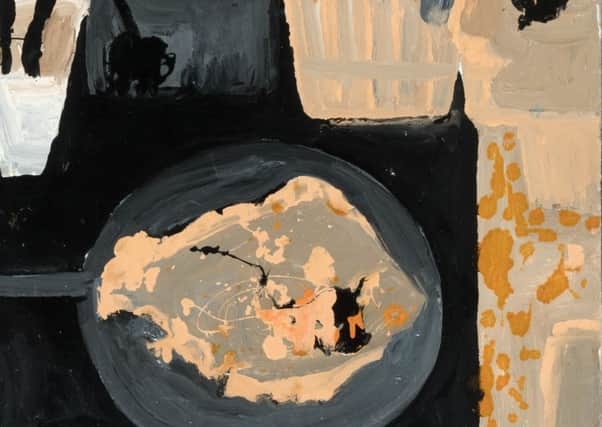A new exhibition at Sheffield’s Graves Gallery explores depictions of the home in British art in the late 20th century


This Life is so Everyday: The Home in British Art 1950-1980 is the culmination of two years of research. Sheffield has one of the most significant holdings of Modern British art in the country and the project Kitchen Sink Too has been delving deep into the collection. “Right from the beginning we were interested in the home and the domestic sphere and that particular era was so important in terms of societal change,” explains curator Dr Abi Shapiro. “We have around 1,400 works from within that time period; it is both key to the collection and under-researched.”
Part of the remit of the project was to bring out pieces that might not have been exhibited for a while. The show comprises more than 40 artworks – including painting, photography, mixed media and works on paper – from well known artists such as David Hockney, Anne Redpath, Su Richardson and Patrick Caulfield, placed alongside works by lesser known figures.
Advertisement
Hide AdAdvertisement
Hide AdOne of these is Margaret Mellis who was working at the time of the so-called ‘kitchen sink’ artists. Ironically, given that the kitchen was an area of the home that most women spent much of their time, that particular artistic movement was a very male-dominated arena. “Mellis became a sculptor later in her career so it may be that her earlier paintings didn’t get the recognition they deserve,” says Shapiro. “We really wanted to show the broader histories of domestic and home life so we were interested in looking at the work of women artists and immigrant communities and at some of Sheffield’s post-war history.”
The thirty year span on which the exhibition focusses saw major changes taking place both within the home – with the introduction of labour-saving devices – and outside it, including the decline of heavy industry, the rise of feminism and the decriminalisation of homosexuality in 1968.
Hockney’s work, for example, often makes reference to his own domestic life as a gay man and one of the pieces in the show is his 1978 screenprint Cleanliness is Next to Godliness depicting a naked young man behind a shower curtain, while Su Richardson’s mixed media Burnt Breakfast, a playful crocheted image of a deliberately spoiled ‘full English’, eloquently expresses a housewife’s growing resentment of her traditional role as cook and carer.
The creative team worked with two community groups on the project – older adults from the Park Hill and Manor Top areas of Sheffield who shared their memories of growing up in the city – and a conversation club for refugees and asylum seekers who were invited to respond to the visual arts collection.
Advertisement
Hide AdAdvertisement
Hide Ad“They had a unique perspective on home and they offered some fabulous comments on how those artworks relate to their own lives,” says Shapiro. “Something we really wanted to do with this project was to make the point that Sheffield art collection belongs to the city and everyone who lives there.”
To July 6. Free entry.